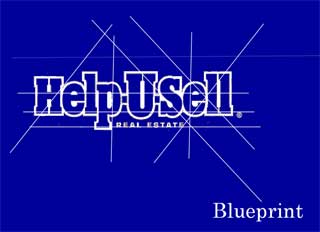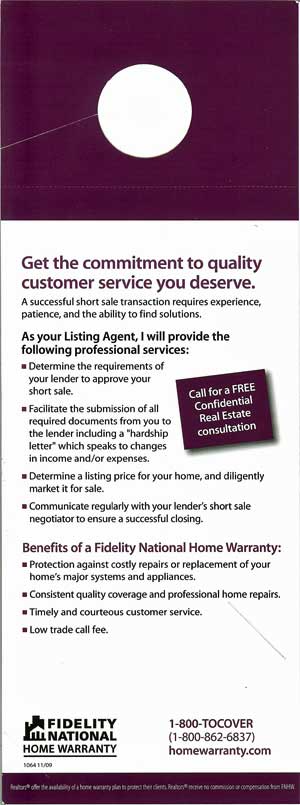Thanks Tami!
Help-U-Sell Homebuyer Stimulus Viral Video #1
Thanks Tami!
Exploring alternatives to the Status Quo in real estate
Thanks Tami!
Note: This Thursday’s training webinar will be devoted to the Help-U-Sell Homebuyer Stimulus Program and to the BIG viral marketing campaign we are about to implement. It is very important that you get to this meeting. It is at 2pm Eastern Time (11am, Pacific) and you can register by accessing this link: Registration
It worked. When the Federal government implemented the Tax Credit programs, there was a definite upturn in business as the deadlines approached. In addition to helping millions of buyers realize their housing dreams, the programs created huge public awareness that special programs like these sometimes exist. The Help-U-Sell Homebuyer Stimulus Program was created to capitalize on that awareness and to make our qualified listings more marketable.
Many, if not most, home buyers today are ‘cash poor.’ This has always been true for first time buyers who are one of the largest purchasing groups today, but it’s also true for many other buyers struggling with tough economic realities. For this reason, many sellers today agree to pay some of their prospective purchasers’ closing costs. What the Help-U-Sell Homebuyer Stimulus Program does is to formalize that arrangement in a way that makes it marketable.
Truth is: many sellers already provide this help, but they don’t advertise the fact and usually don’t commit until a purchase agreement is in process. With the Homebuyer Stimulus program we’re asking sellers to consider the advantages of paying some closing costs upfront, at the time of listing. That then becomes a big market differentiator that we can advertise. A buyer comparing two similar homes in the same area is likely to opt for the one that is Help-U-Sell Homebuyer Stimulus Eligible because it may require less cash to close.
There are many new materials associated with the program:
All of these items are in the Download Library under ‘ Homebuyer Stimulus Program.’
The program probably fits best on listings in price ranges attractive to first time buyers, where sellers have equity. It is probably less applicable to REOs or Short Sale Listings where a lender will make the ultimate decision on any offer to purchase.
What we’re asking participating sellers to do is pay 3% of the purchase price, up to $8,000, at closing towards the buyers’ non-recurring closing costs. All of the credit will be reflected in the HUD-1 and it’s all subject to State and Federal law, lender requirements, and type of loan secured by the purchaser. Any credit unrealized by the buyer due to regulation, type of mortgage or lender requirements, is retained by the seller. When coupled with Help-U-Sell Low Set Fee pricing, the total outlay by sellers may still be less than paying a traditional broker a full percentage based commission.
Tami Patzer (our Social Networking guru) has developed a viral marketing campaign using carefully placed video announcements about the program. Once implemented that program should create huge consumer awareness and interest nationwide. It is important that all Help-U-Sell brokers and team members become familiar with the program before that campaign begins. That’s why the Thursday webinar this week will be devoted to this. In the mean time, it would be wise to go to the Download Library, get the materials that are there and familiarize yourself with them.
Really: Get Ready! This will be big.
We’ve just concluded the first set of summer 2010 Rallies with a meeting yesterday in Baltimore. Like the three Rallies that preceded it, the Baltimore event was great fun. Everyone was focused, intent and engaged. There was a real sense of excitement and mission as we worked through the material together.
John has been talking at these meetings about growing your business. The premise is that, in the downturn, we’ve cut our expectations. Where 10 closed sides a month used to be just getting by, now we shoot for 4. Many of us have thus taken our mature offices and rolled them back to Phase I offices: minimal or no staff with the Broker doing most everything that needs to be done.
What John presents in ‘Blueprint’ is a logical and reasonable plan for growth.
Phase I is all about doing deals and establishing systems and procedures. The Broker’s goal is to get to 4-5 closings a month. His or her role is to create systems for everything from handling inquiries to processing sales so that when staff is added they will have procedures and standards to uphold.
The transition to Phase II comes when a consistent 4 – 5 closings a month is achieved. It is at this point that the Broker begins to be ‘maxed out,’ and opportunities start falling through the cracks. Phase II begins when the Broker starts hiring staff: a part-time admin and a single Buyer’s agent to start. The broker’s role shifts from doing deals personally to generating leads. The business has begun to grow, and he must sustain that growth by producing a steady flow of leads into the office. Leads are largely the result of Listings and Marketing so this is where the Broker (now freed of tedious office tasks by the Admin and of time consuming buyer work by the Buyer’s Agent) focuses his or her efforts.
Marketing today looks a little different than it did 5 years ago, but accomplishes the same thing: Consumers in our area understand that we are here and represent savings, other people use us, and it works. Rather than sending 10,000 pieces of mail each month to establish that message, the broker may be developing consistant programs for contacting FSBOs, Expireds, and PIDs (Properties in Distress). He or she may be devoting significant time and some financial resources to establishing an Internet presence that enable consumers in the local market to find the company.
This is the point where the Broker’s obsession with leads comes to the forefront. Every inquiry into the office, whether from the Web or the phone, is logged, contact and source information is collected and office staff is held accountable in the conversion process. It’s funny, but the tried and true Help-U-Sell Buyer and Seller data sheets and the corresponding Buyer Pool Book they create become the real backbone of the company. After all, Help-U-Sell offices are all about LEADS generated and successfully converted to sales. An effective tracking mechanism and a constant focus on conversion rate improvement is essential.
As Phase 2 continues, more Buyer Agents are added and support is increased. The Broker continues to focus on Listings and Marketing. Phase 3 probably begins about the time the Broker hires help on the Listing side of the business: a licensed assistant who handles all of the routine tasks associated with having listings and who can stand in for the Broker on Listing appointments in his or her absence. Now the office is doing 120 – 150 deals a year and can increase that number easily by adding more buyer agents and support staff.
This vision is very clarifying. I’ve said it before: for the Powells (John and Maria), the business isn’t easy . . . but it is simple. Growth is logical, next steps are triggered by specific events that have been anticipated and the company grows quickly. For John and Maria, Phase 1 took their first six months — mid-2008 to early 2009. They are still in Phase 2, with several Buyers Agents and an expanding support staff. Phase 3 is within reach and will probably be achieved by year’s end. All of this has happened in the worst real estate market in history, in one of the hardest hit markets in the country: Tucson, AZ.
What’s fun in John’s presentation are the profitability projections. In Phase 2 he demonstrates how a Broker can pay himself a salary and still turn a profit in the high teens. In Phase 3, the salary is increased and profitability goes to near 30%. It’s great to see that on paper, but what’s even better is to see it as it’s actually happening: in Tucson, Az.
The PowerPoint presentations from the latest round of rallies are posted in the Download Library, now. Many of you asked for them, now go get ’em. If you’ve forgotten your login information, just send an email to support@helpusell.com.
If you attended one of the rallies, there were a number of exciting announcements: the Help-U-Sell Homebuyer Stimulus Program (details also posted in the Download Library), the Short Sale Leads program (you’ll find details in the Rally Presentations folder), and Sikku Short Code Marketing. Check your email this week for details about these exciting new developments.
I’m off to Baltimore tomorrow for the next rally. John and I will be reviewing everything I just mentioned plus presenting a Blueprint for company growth and going back to basics with the Five Pillars of Help-U-Sell. I’m looking forward to seeing all of the folks from the Northeast and am sure it will be a great time.
Meanwhile, this would be a great time to get back to building your online presence. That means customizing your website and working with all the other online tools available to you. Don’t forget: Tami Patzer is ready to help you in any way she can. Just give her a call: 941-951-7707 Ext. 3001.

 Door hangers are really in this year.
Door hangers are really in this year.
They help make marketing affordable. Ok: that means you use person power to get them out rather than postage power. This came from an agent — not Help-U-Sell — who attached her card in the appropriate place. Best I can tell, all my neighbors got one too. The door hanger itself was provided by Fidelity National Home Warranty and I think it’s pretty effective. I asked Scott Jackson, our Bank of American National Accounts Manager, if they had something similar our Help-U-Sell team could use. He told me the local MLOs have access to a wide variety of marketing materials for brokers and he was sure several dealt with Short Sales and Loan Mods. If you’re looking for something new to add to your marketing activities this summer, I think this could be a good thing. Call your B of A MLO and see what’s available and then start pounding the pavement (or get your kids to do it)!
(Aside to anyone attending the latest round of Help-U-Sell rallies — this would probably work well with that TOP SECRET Short Sale lead program we presented at the rally. I don’t want your competitors to know about it, so I won’t name it here and I won’t describe it in detail. If you missed it at the rally, call me and I’ll fill you in).